
Agilite will be launching their new K19 Plate Carrier System and other new products at SHOT Show 2020-Come by the Agilite booth (Booth #20659) to see the latest warfighter equipment from Israel.

Agilite will be launching their new K19 Plate Carrier System and other new products at SHOT Show 2020-Come by the Agilite booth (Booth #20659) to see the latest warfighter equipment from Israel.
For Immediate Release – Scottsdale, AZ – Reactor Technologies, pioneer in Smart Stock technology, announces the release of the Fusion Module at Shot Show 2020.
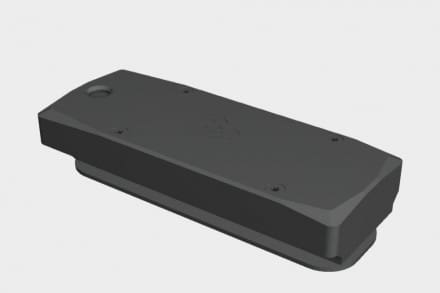
The Reactor Fusion Module allows the shooter to monitor and collect all essential data that is related to their shooting experience. With the Reactor Fusion Module, users will be able to monitor items such as shot detection, shot count, shot mapping, recoil force detection, orientation (heading, cant and inclination) and barrel temperature reading. All of this data is logged instantaneously and in the background while coupling your GPS location and environmental data to each shot. Reactor has created a user friendly app, with data streaming via Bluetooth that features background logging capability, a heads up display, and multiple rifle profile capabilities.
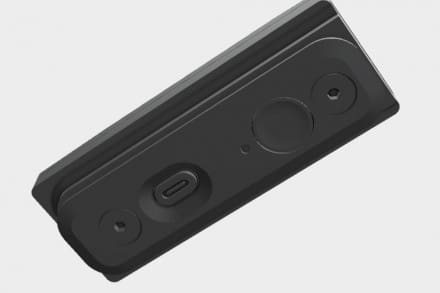
The Fusion Module is a system of technology housed in a water resistant, aluminum and hard polymer housing, that is designed to mount via M-lok between the barrel and a stock or chassis. The onboard battery is charged via USB with battery level being reported in real time to the mobile app. Customers looking to integrate the Fusion Module into their existing rifle system will enjoy compatibility with the Grayboe NEO and other chassis systems with M-lok equipt forends.
The Reactor Mobile App is the keystone of our Smart Stock™ system, providing our users with an integrated place to view their Fusion Module data, weather data, and supported third-party integrations. Users will be able to have multiple rifle profiles, can export data, and cross reference point of impact trends against various atmospheric and equipment configurations. Software will be updated frequently to enable additional functionality, features, and to enhance the user experience. These updates are free for the lifetime of the product.
Features
These features are available when the Fusion Module is paired with the Reactor Mobile App. Search the App Store or Google Play Store for the Reactor app.
Shot Detection & Counting
Shot Mapping
Heading, Cant, and Inclination
Barrel Temperature Readings
Background Shot Logging
Heads Up Display
Environmental and Weather Data
Free Software Updates
* Recoil Measurement
* Rifle Lifespan Metrics
* Maintenance Reminders
*Indicates features that will be available shortly after launch.
MSRP: $499
For more information please visit:
reactorusa.com

January 15th, 2019 –St George, UT – Vudoo Gun Works, leader in rimfire precision rifles, is proud to announce the addition of the V22M action to their product lineup. Vudoo Gun Works is now offering complete builds chambered in 22 Magnum and 17 HMR.
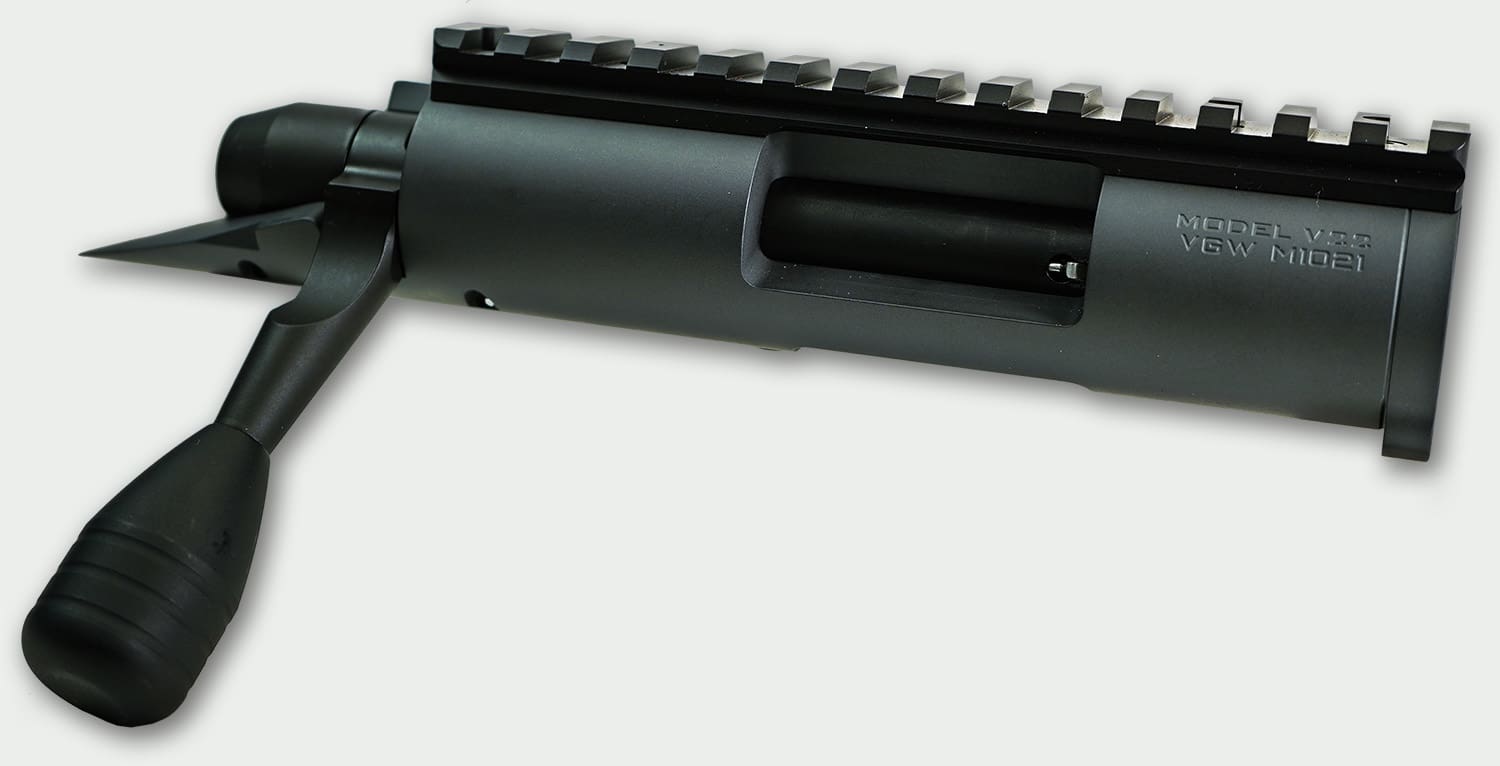
The V22M brings longer bolt travel to accommodate the length of 22WMR and 17HMR cartridges. This added length provided the opportunity to design a new articulated bolt release that transfers the force of bolt actuations to a plunger hidden under the scope mount. The V22M also brings added consistency with a new anti-rotation bolt head, a redesigned multi-piece bolt assembly, and our own unique 7075 machined Aluminum AICS style magazines available in five and ten shot capacities.
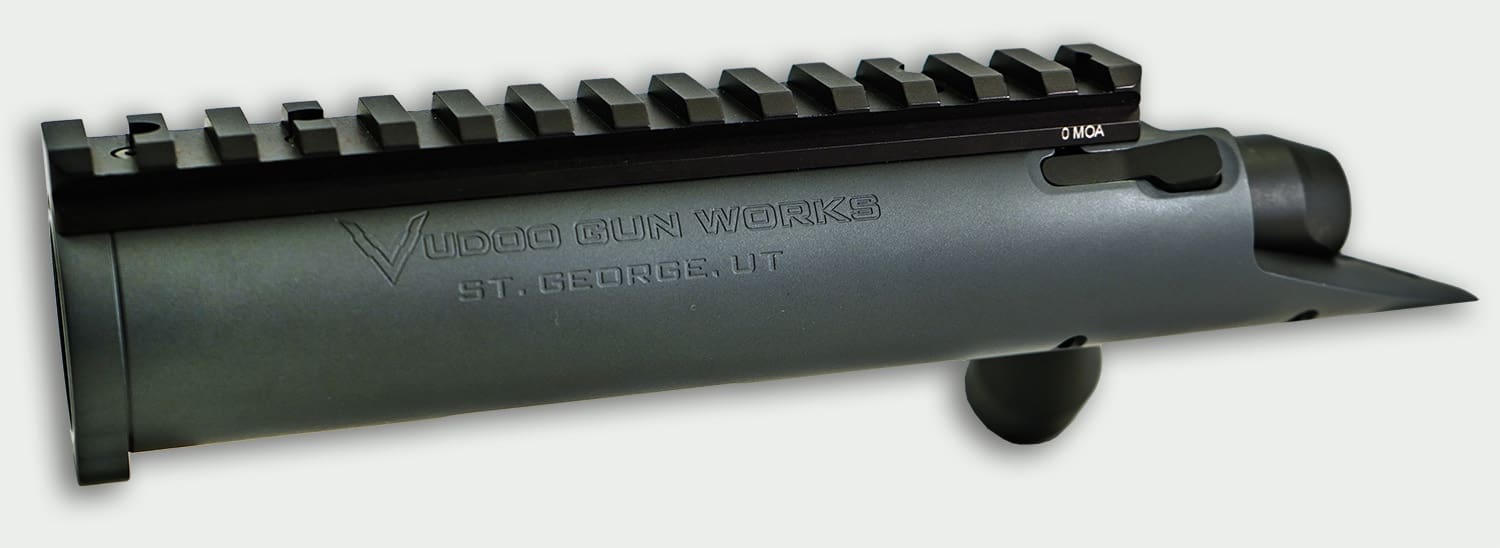
The new V22M bolt assembly is similar to its predecessor but offers toolless disassembly and maintenance by way of a unique bayonet style locking system between the shroud, bolt body, and bolt front. In addition, the fire control system has also been refined to eliminate drag and therefore, provide more consistent and reliable ignition.
V22M Features:
? Remington 700 Short Action Footprint
? Remington 700 Pinned Trigger Interface
? Magazines fit standard AICS compatible bottom metal
? Anti-rotation bolt nose
? Improved bolt release
? Toolless bolt disassembly
? Refined fire control design
? Compatible with 22WMR and .17HMR
Visit Mile High Shot Show booth #7502 for a hands on product demonstration.
Yes! I’ve been holding out for Magpul to introduce a takedown stock for the Ruger Pistol Caliber Carbine. Essentially a 10/22 scaled up to 9mm (or 49 S&W), the PCC uses proprietary Ruger magazines or via a swappable magwell (included) Glock magazines, it makes a great option for those who want a takedown pistol caliber carbine.
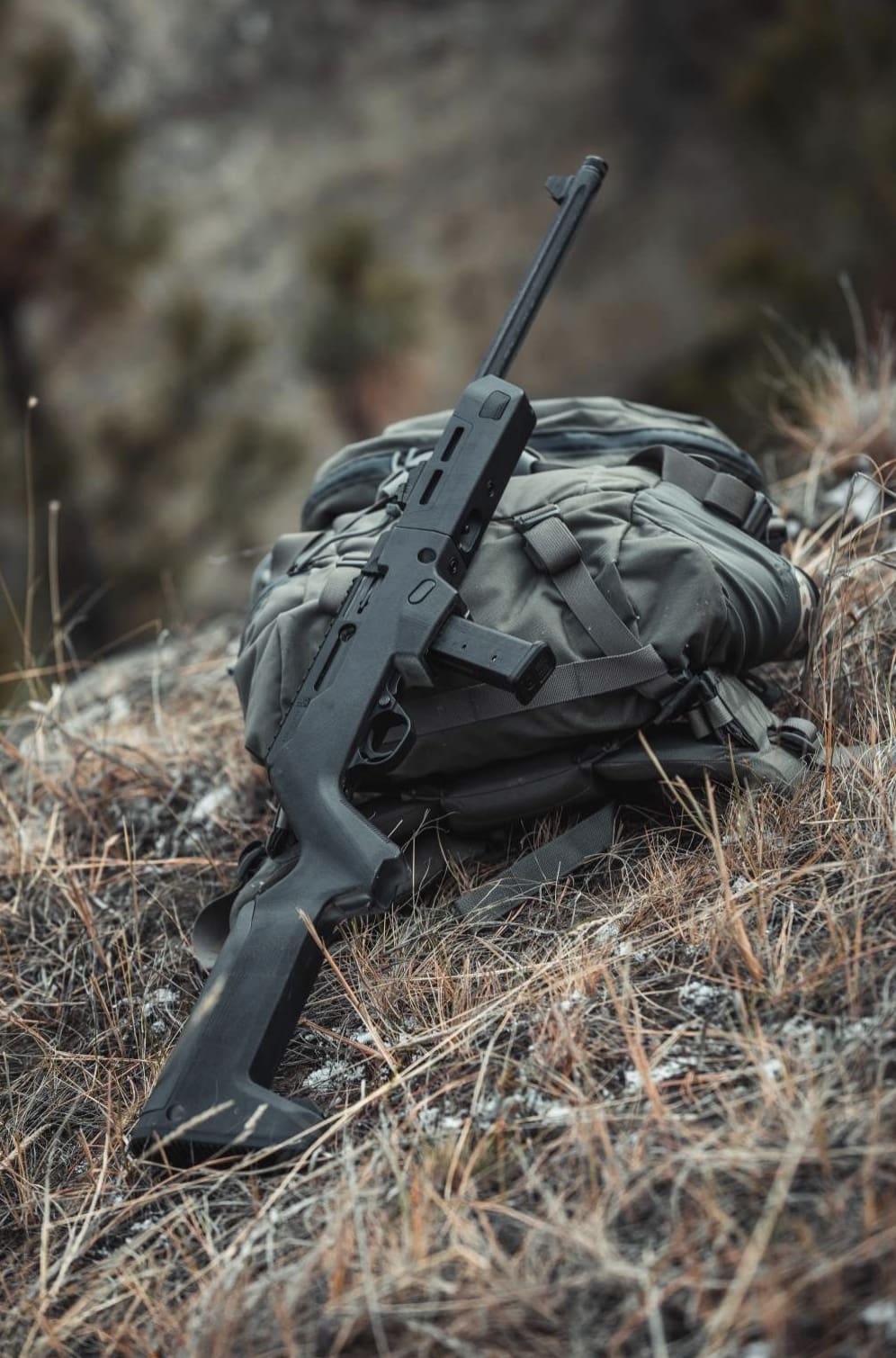
The ORM stock is pretty basic. Enter Magpul, offering the functionality of the X-22 takedown stock but scaled up to the PC Carbine.
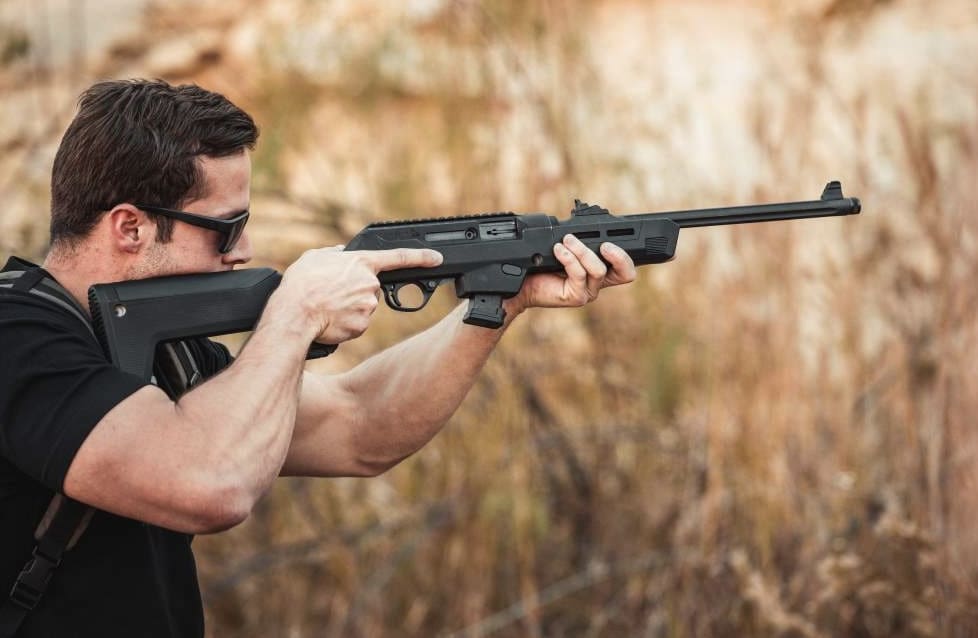
The handguard features M-LOK slots at the 3 & 9 o’clock positions and interchangeable cheek risers to accommodate various sighting options. The PC Backpacker stock also features an MOE SL rubber butt-pad offering an anti-slip surface that increases impact protection and is compatible with the MOE SL Enhanced Rubber Butt-Pad for an additional 3/8” LOP.
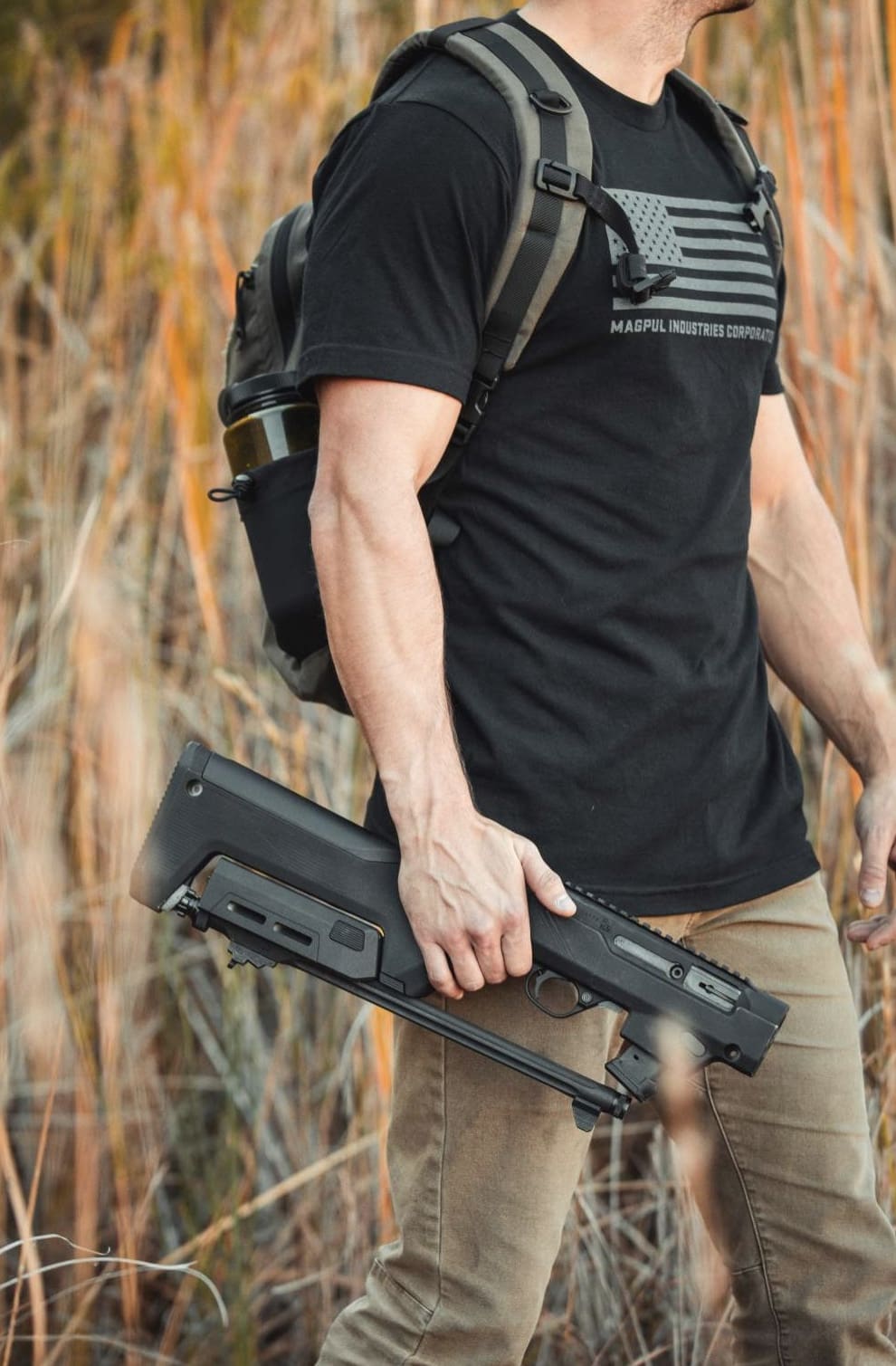
Using a unique locking interface that attaches the barrel assembly to the receiver, the PC Backpacker provides an efficient solution for storage during transportation while maintaining convenient assembly from the stowed position.
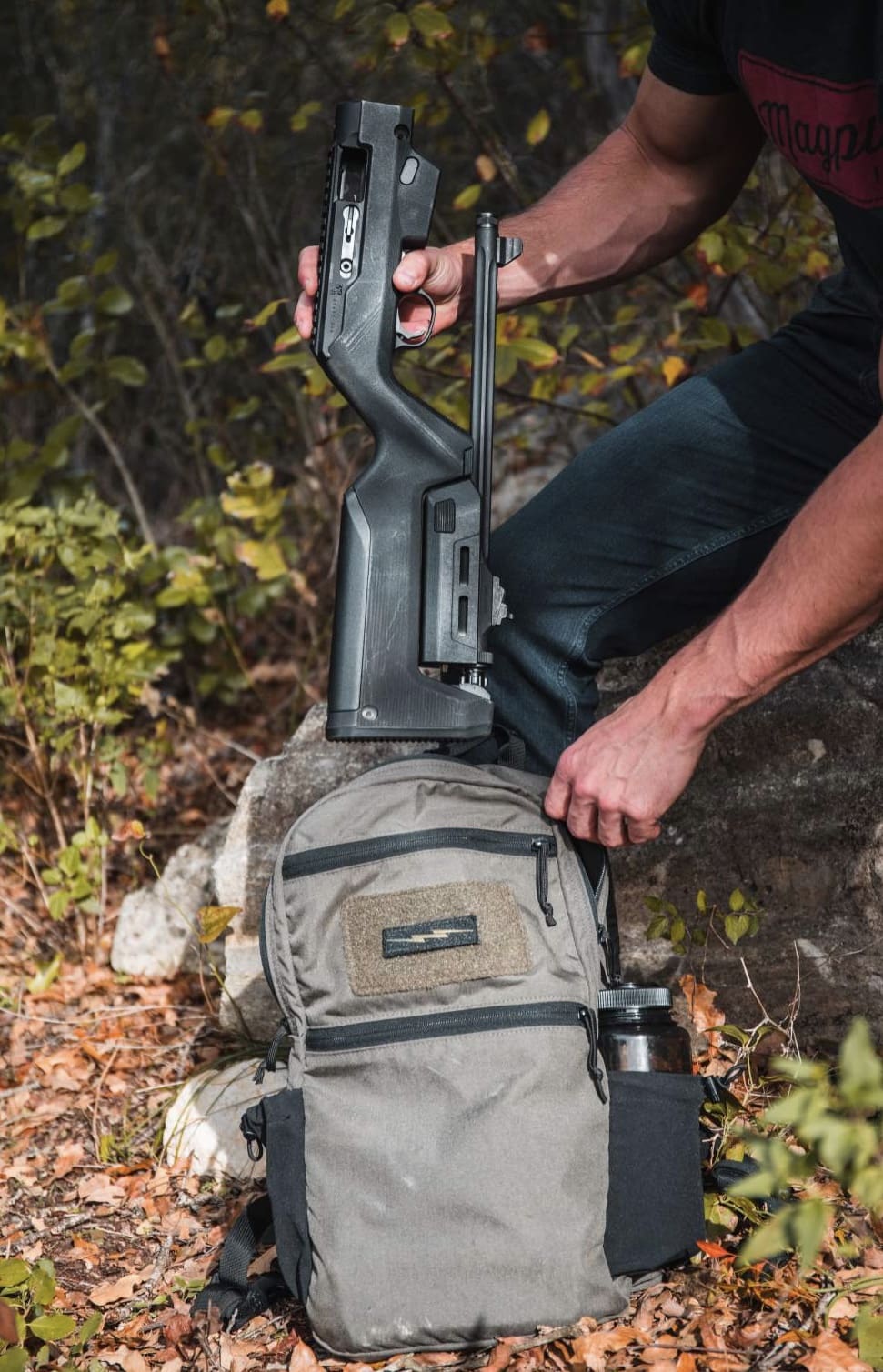
There are also two integrated storage locations. The first is a water-resistant grip storage compartment that provides an at-hand location for a small multi-tool, survival equipment, or cleaning equipment.
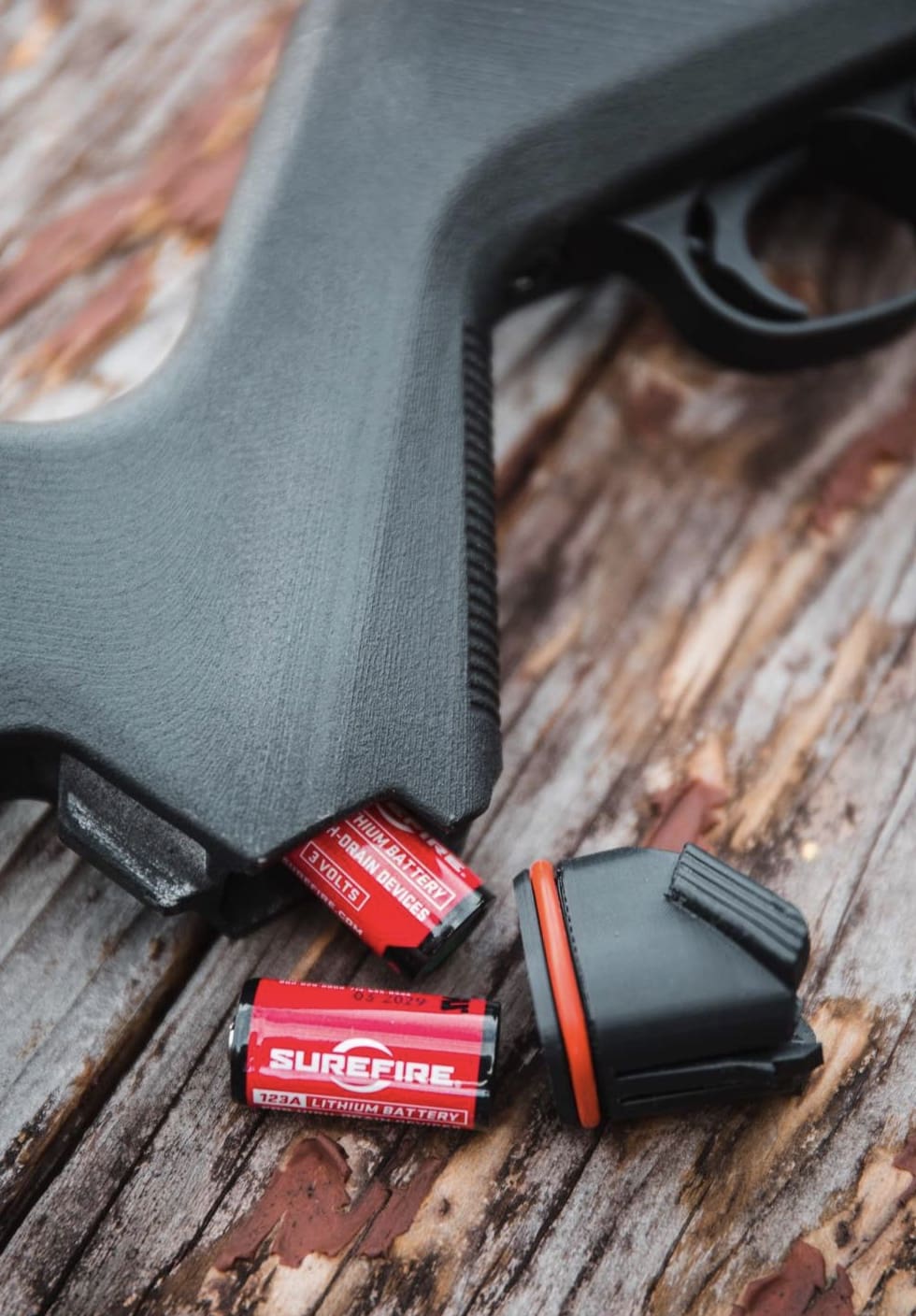
The second is a compartment in the riser section that’s ideal for a single pistol magazine, fitting up to the PMAG 21 GL9.

Features:
• Drop-in design compatible with all factory Ruger® PC Carbine™ models offered in 9mm Luger and 40 S&W
• Unique locking interface to attach the barrel assembly to the stock body when being transported
• Reinforced polymer construction for strength and durability
• Ergonomic M-LOK-compatible hand guard
• Interchangeable standard and optic-height cheek risers included
• Optional QD sling mounting capability
• Water-resistant grip storage compartment and a second compartment in the riser section
• MOE SL® nonslip rubber butt-pad; compatible with the MOE SL® Enhanced Rubber Butt-Pad (MAG349) for an additional 3/8” LOP and enhanced user comfort
We are happy to announce new product which was are calling ModButton which is a collaborative effort between Modlite and Unity Tactical.
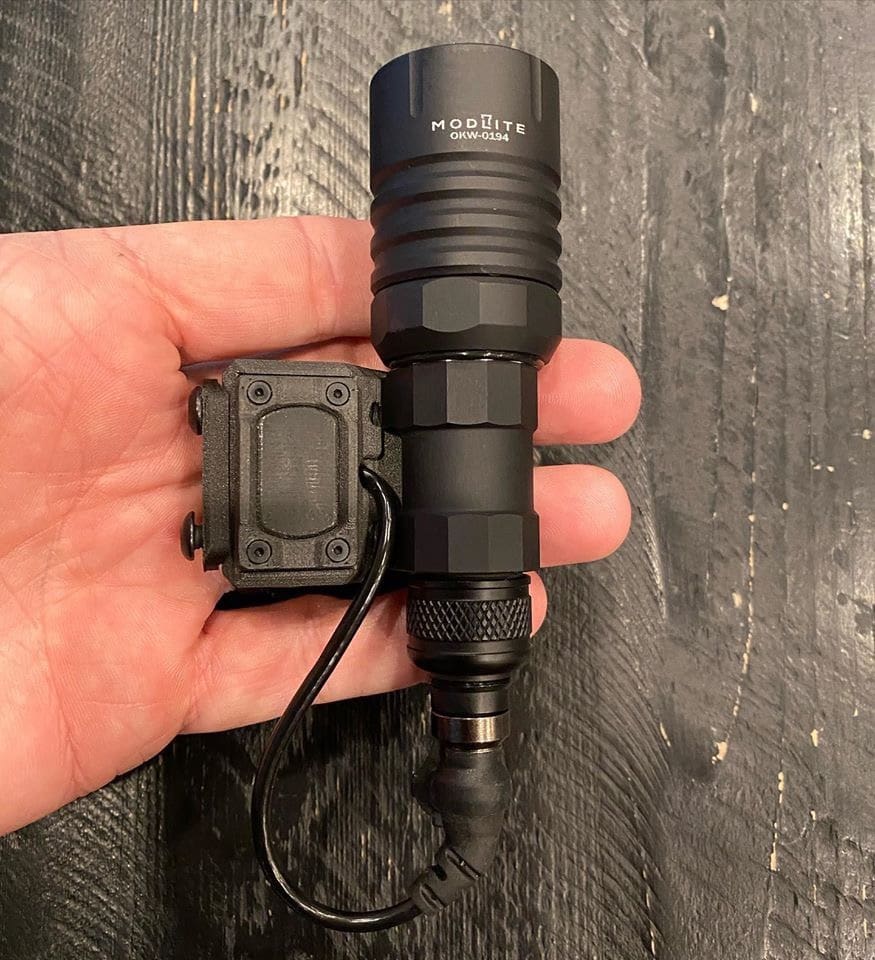
ModButton is a integrated switch and mount that is compatible with Surefire, Arisaka and Modlite light bodies. With the help from out friends at Unity we have been able to design a switch with maintains backward compatibility with older legacy Surefire lights yet is able to deliver the power needed to run our next gen lights at full output.
ModButton is fully ambidextrous and also supports the Unity Tactical light wing which will allow shifting the light head forward of the switch.
ModButton is set to ship late next month and in the next couple of weeks an official release date will be announced.
Check it out in booth #6303 at SHOT Show.
For the past 15 years, ZEV Technologies has continually driven the firearms market. Looking back at our foundation and where we are today, it’s clear to see that in 2020 and beyond, innovation is WHO WE ARE.
Join us this year at Shot Show, booth # 20463 and let us show you excellence in firearms manufacturing.